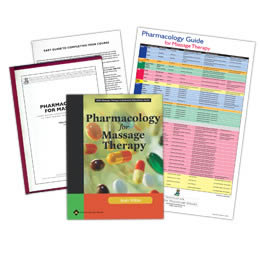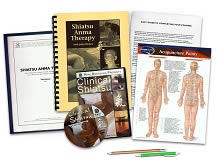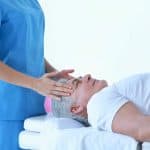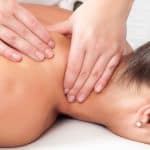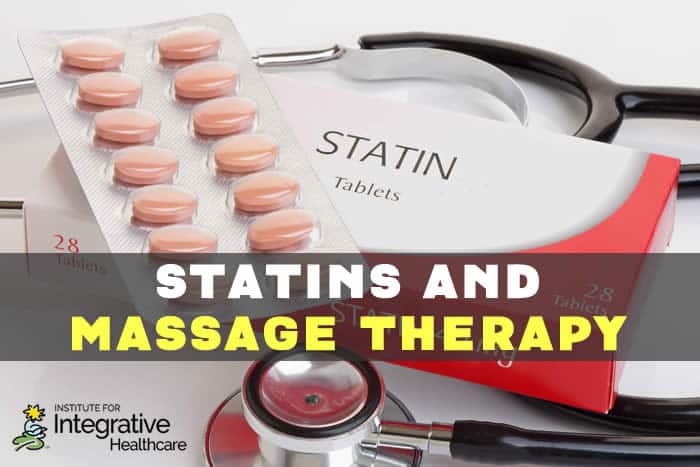

 Want to earn continuing education credit for this article? Learn more.
Want to earn continuing education credit for this article? Learn more.
2017 data from the CDC’s National Center for Health Statistics indicates that in the last 30 days almost half of Americans (48.9%) used at least one prescription drug, about 23% used three or more prescription drugs, and more than 11% used five or more prescription drugs. This information highlights the need for massage therapists to be familiar with how drugs impact massage. Nowhere is this need more apparent than for clients taking statins, one of the most frequently prescribed medications today.
About Statins
Designed to reduce the impact of heart disease, statins lower cholesterol. One in 4 Americans over 40 take a statin drug. Statins are known scientifically as HMG-CoA reductase inhibitors. In short, they suppress the liver’s ability to produce cholesterol naturally.
Statins block the enzyme in the liver that is responsible for making cholesterol: hydroxy-methylglutaryl-coenzyme A reductase (HMG-CoA reductase). In addition to blocking this enzyme, statins help the body reabsorb cholesterol that has built up in plaques along artery walls. This re-absorption action prevents further blockage in the blood vessels, thus reducing the occurrence of strokes and heart attacks.
Seven statins are approved for use in the United States:
| Brand Name | Generic Name |
| 1. Lipitor | Atorvastatin |
| 2. Lescol, Lescol X | Fluvastatin |
| 3. Mevacor, Altoprev | Lovastatin |
| 4. Pravachol | Prevastatin |
| 5. Crestor | Rosuvastatin |
| 6. Zocor | Simvastatin |
| 7. Livalo | Pitavastatin |
There are also combination products that contain a statin:
| Brand Name | Generic Name |
| Liptruzet | Atorvastatin/Ezetimibe |
| Advicor | Lovastatin + Niacin |
| Vytorin | Simvastatin/Ezetimibe |
| Simcor | Simvastatin/Niacin-ER |
Statin Side Effects + Massage Considerations
Any effective pharmaceutical medication is likely to have an accompanying list of side effects and statins are certainly no exception to this rule. Some of the more common side effects of statins and how that would impact massage include:
- Muscle Pain, Joint Pain and Muscle Weakness – While this is one of the most frequently reported statin side effects, mild or infrequent bouts with these discomforts are not reasons to modify massage. However, severe or frequent weakness or pain should be cleared by a physician prior to massage.
- Severe Muscle Damage (Rhabdomyolysis) – Although rare, suspected rhabdomyolysis should be referred to a physician and massage withheld until medical clearance is granted. This referral and precaution is imperative to protect the kidneys from potential damage. The risk of muscle damage is magnified in those who combine statins with niacin (Vitamin B3)—a supplement commonly used to lower cholesterol.
- Heartburn and Nausea – With either of these symptoms, therapists should utilize a semi-reclining position, and avoid pressure and speed that rocks the client. In addition, shiatsu on the point Pericardium 6 is known to help ease both heartburn and nausea.
- Cramping – Avoid the abdominal area in clients with abdominal cramping or if the pressure causes pain. For a muscular cramp, consider reciprocal inhibition for relief. By activating the opposing muscle group, reciprocal inhibition forces the contracted muscle to relax. For example, a cramp in the posterior, lower leg can be relieved by applying resisted tension to the anterior, lower leg muscles.
- Constipation – To help constipation, position the client supine with flexed knees and apply gliding strokes, kneading, and vibration in a clockwise direction on the abdominal area. In addition, applying shiatsu massage techniques to the Stomach and Large Intestine meridians can facilitate movement in the bowels.
Since so many Americans take statins, massage therapists are best prepared by reviewing this drug category and its associated side effects. The information presented here is intended to be a starting point for discovering the impact statins can have. Armed with a deeper understanding of HMG-CoA reductase inhibitors, practitioners will be confident in knowing what red flags to look out for and devising a plan to best address their clients’ complaints.
Earn continuing education credit for this article contained in our Hypertension, Cholesterol & Massage series. Click here to enroll.

